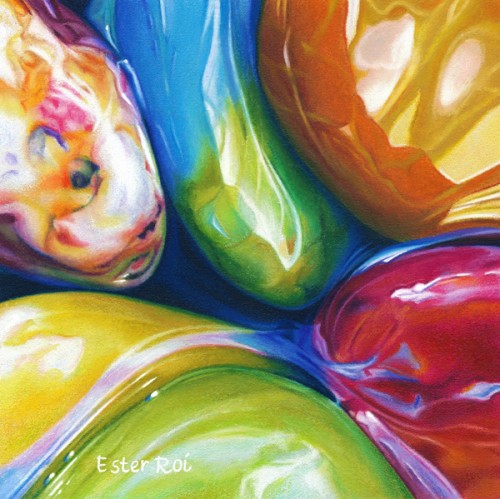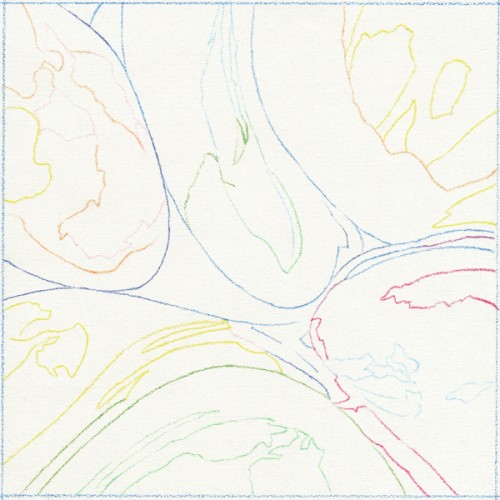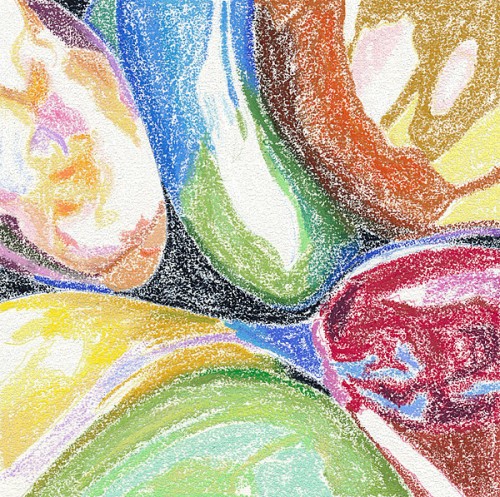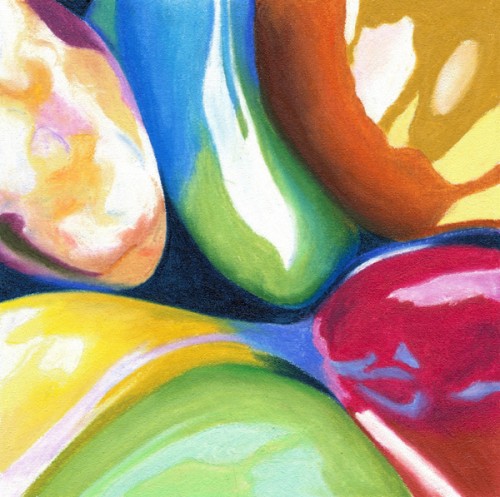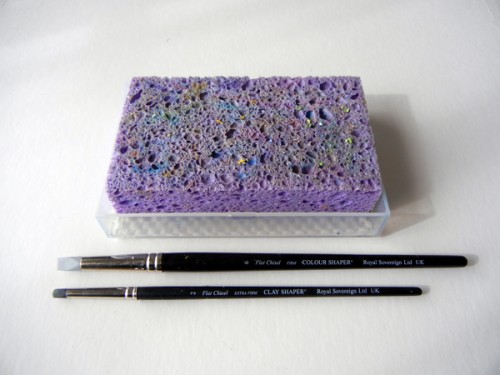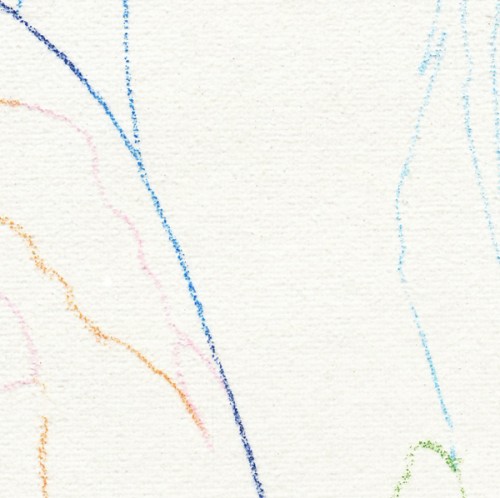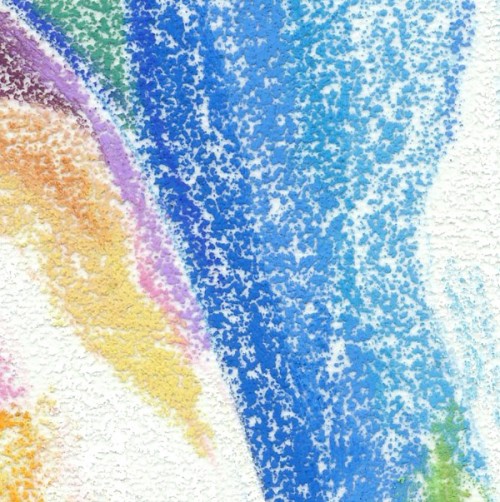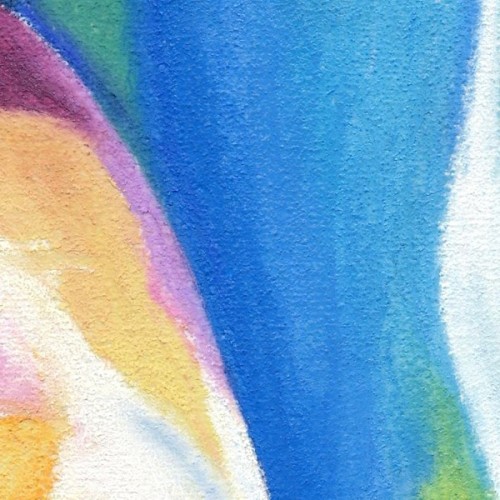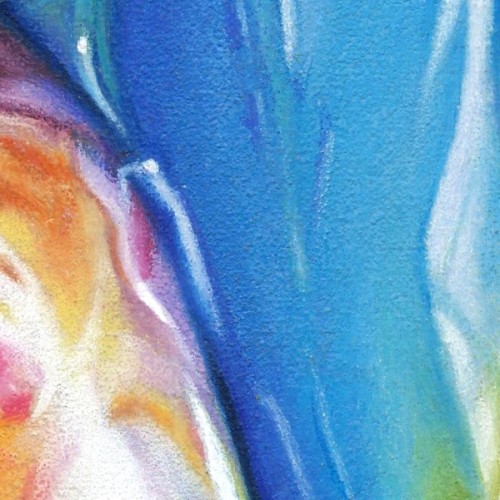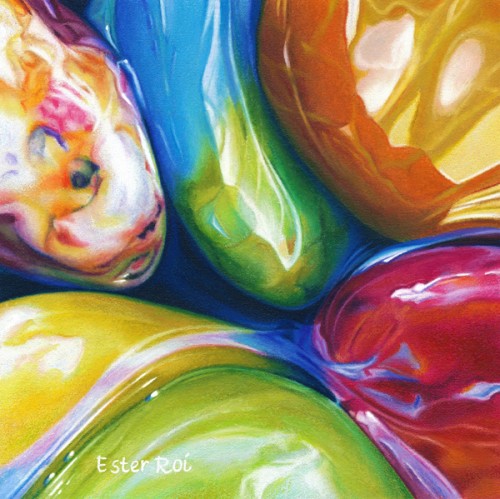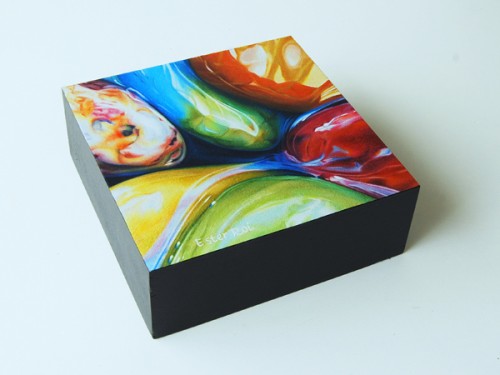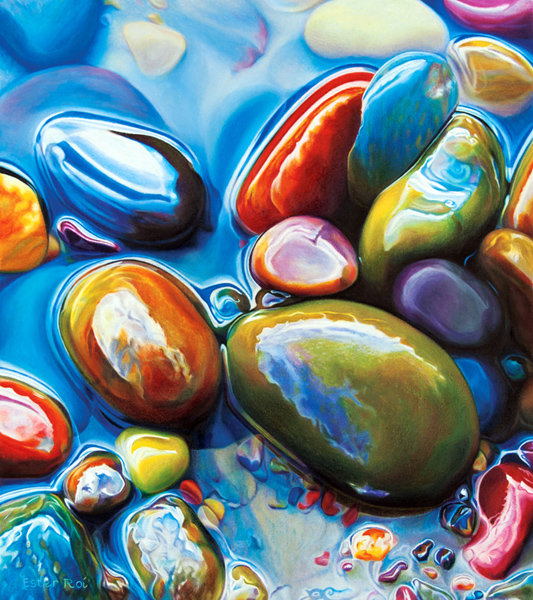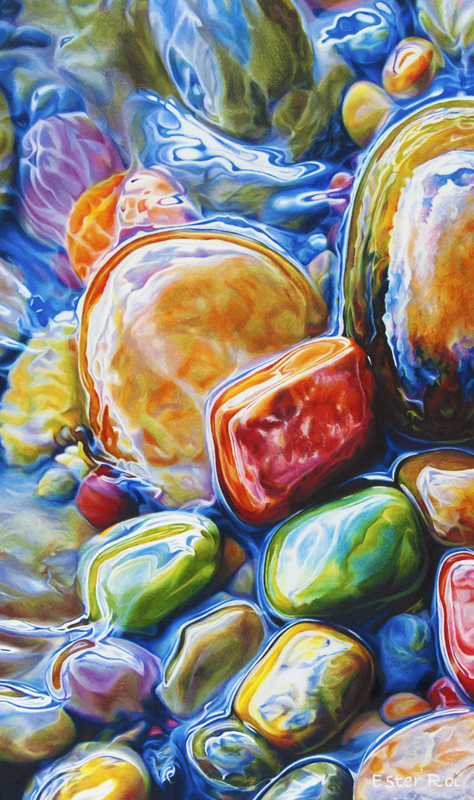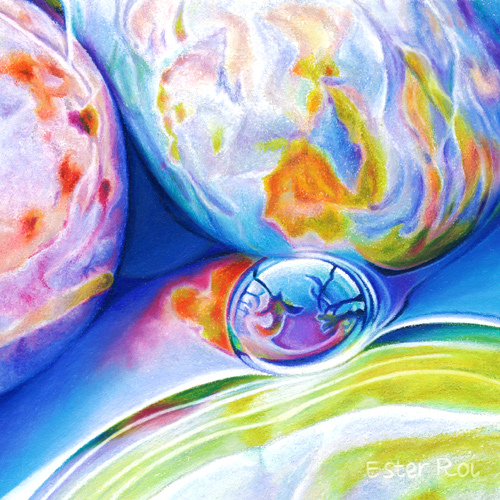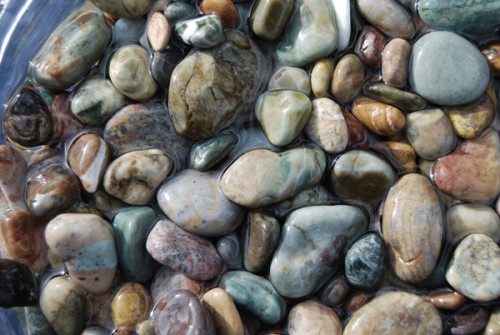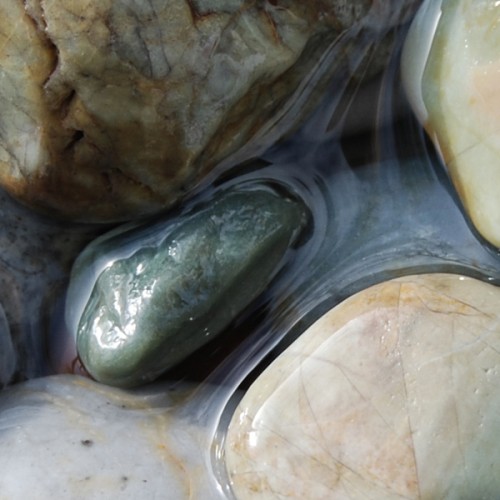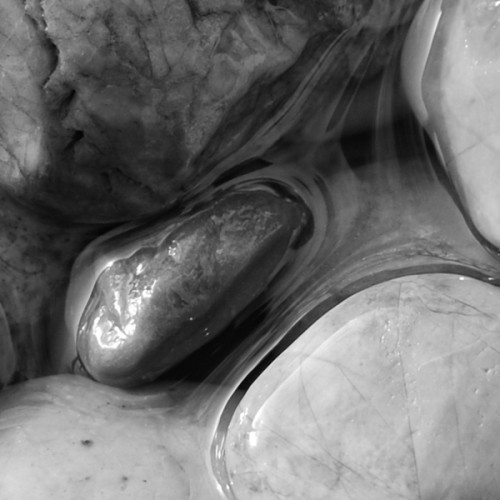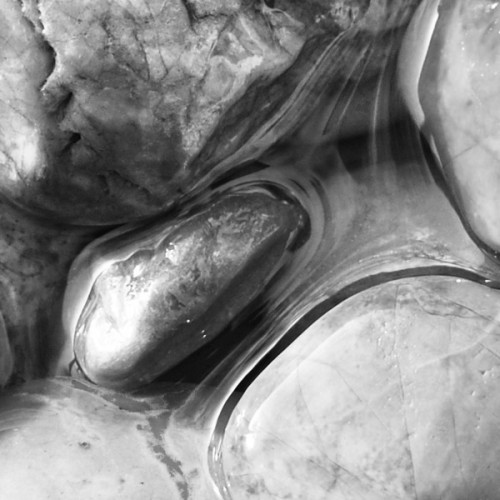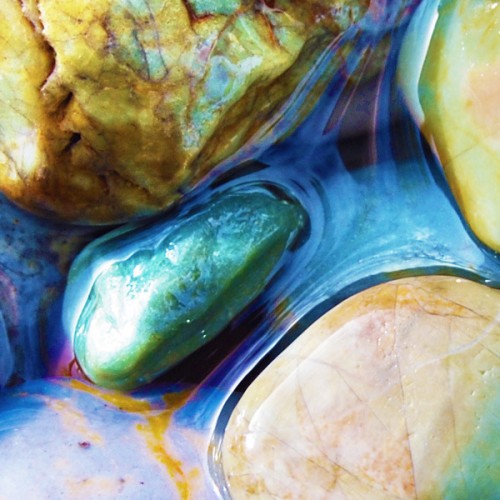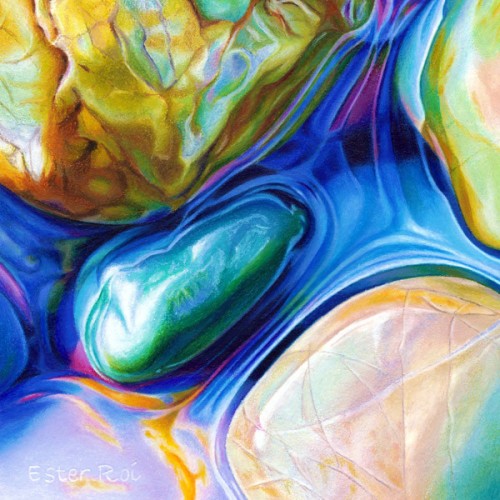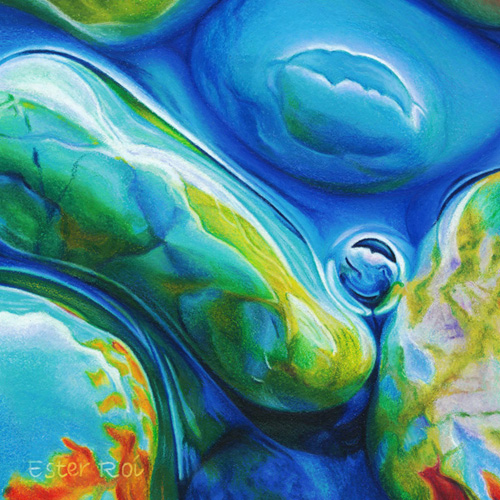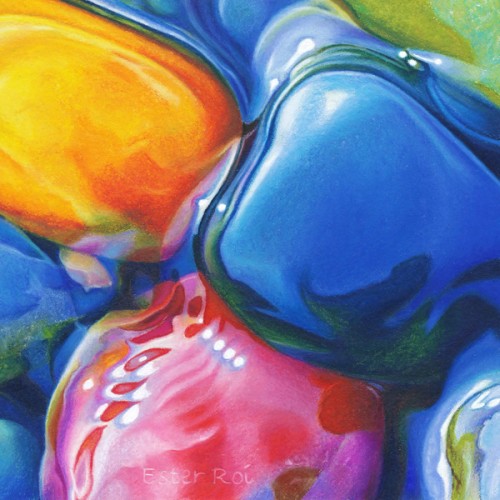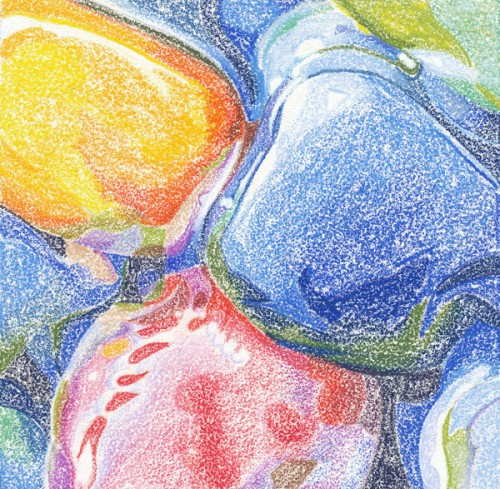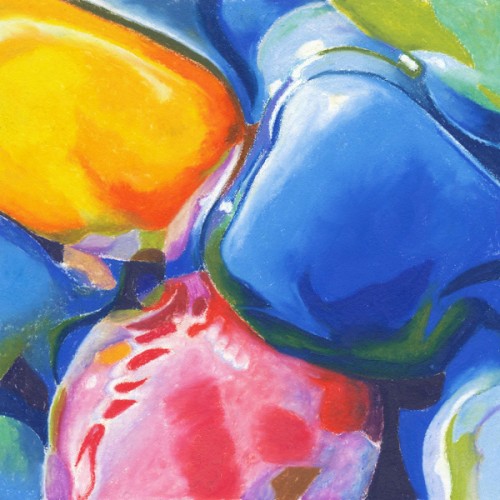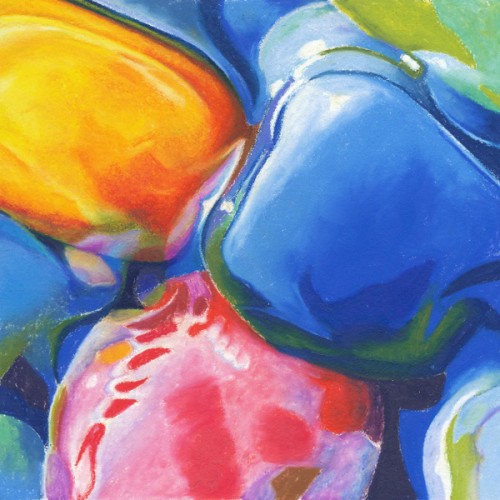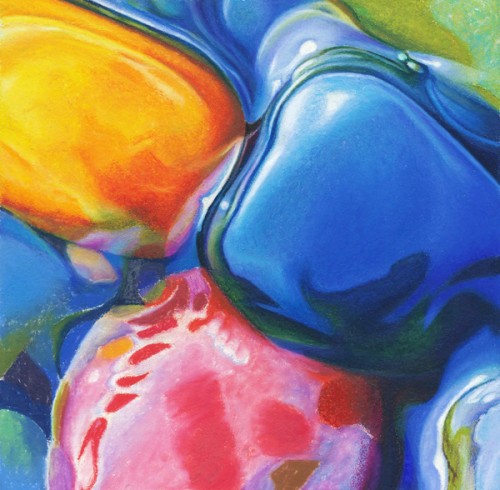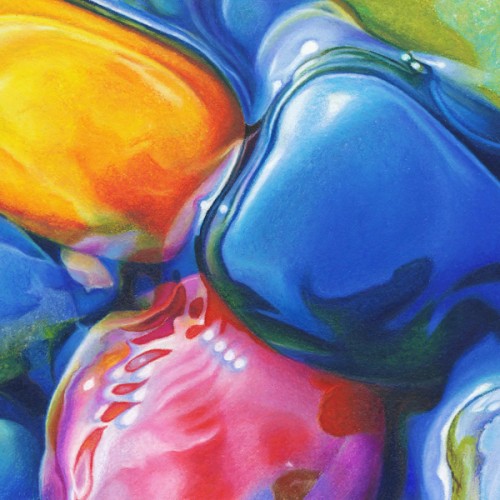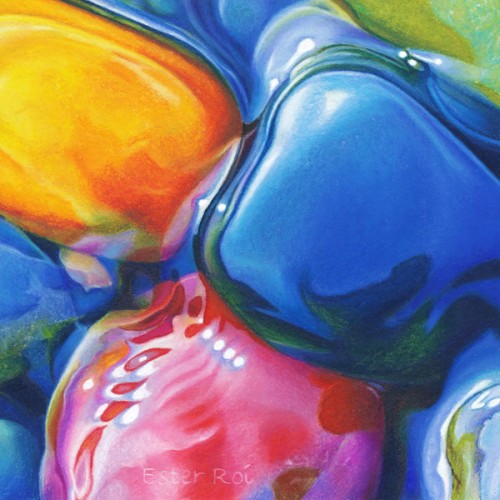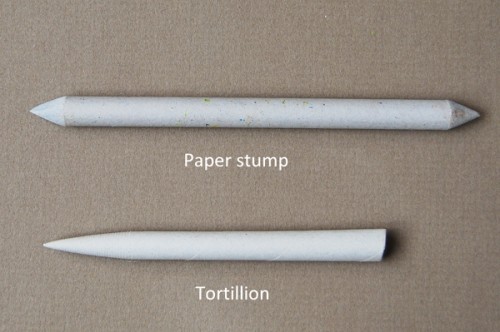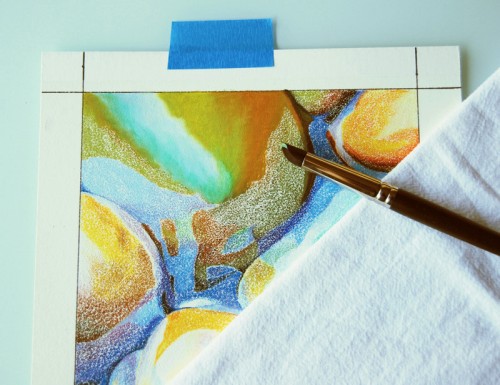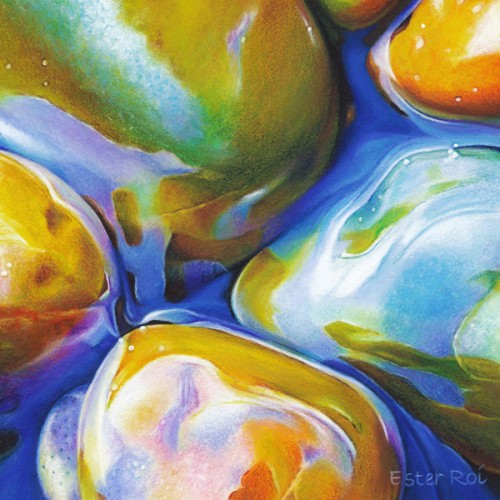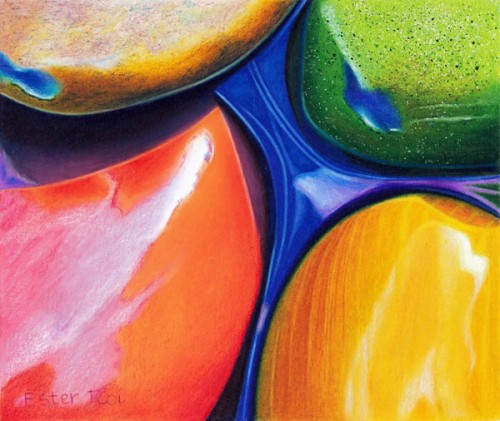Title: River Pebbles, No. 11
- Size: 6" x 6"
- Medium: Caran d'Ache Neocolor I and II, Prismacolor Premier Colored Pencils (Verithin and Softcore), Caran d'Ache Luminance Colored Pencils
- Miscellaneous: Tortillions, Paper Stumps, Caran d'Ache Blender, Colour Shapers
- Surface: Extra Fine Texture Canvas primed with several coats of clear Art Spectrum Colourfix Supertooth Primer
- Technique: Icarus Drawing Board
- Mounted on a 6" x 6" x 2" Ampersand Claybord and varnished
- To see how I mount and varnish my artwork please refer to my post on Glassless Framing.
The outline was accomplished with Prismacolor Verithin on the cool zone of the Icarus board.
After drawing the outline I proceeded to map the main colors with Neocolor artist crayons on the warm zone of the Icarus board using a low temperature.
For more on color mapping with artist crayons you can view the following videos:
- Exercises on Colourfix Paper - Layering Artist Crayons on Colourfix Paper
- Mussel Shell - Blocking in Colors with Artist Crayons
With temperature setting at maximum, I melted the artist crayons using clay shapers (also known as color shapers).
For more on melting artist crayons you can view the following videos:
- Exercise on Colourfix Paper - Melting Artist Crayon on Colourfix Paper
- Mussel Shell - Melting Artist Crayons
In the picture above you can see the two color shapers I used for melting and the wet sponge for cleaning. For easier cleaning I spray the surface of the wet sponge with a little Simple Green.
With the temperature set at medium I developed the colors, values and details of the pebbles by layering and blending colored pencils with a variety of tools like tortillions, paper stumps and a Caran d'Ache blender.
I finally mounted the canvas on a 2" thick Claybord and painted the sides with acrylic. The artwork is now ready for varnishing.

